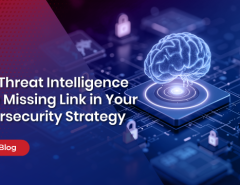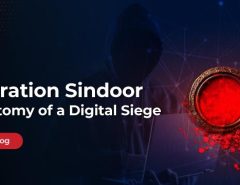Businesses today carry more sensitive data than ever before. Any crucial information about the customers, if it gets into the wrong hands, can cause a lot of damage to both clients as well as companies. Apart from the client’s information, the business itself has a lot of valuable information such as its intellectual property, financial data, business process information which, if lost or tampered, can create havoc for enterprises. Almost all industries carry some or other information that hackers are looking for and thus are a potential target for cyber attack. However, few things make one industry more vulnerable to attacks as compared to others. Let’s understand them briefly.
Financial Institutions:- Money is always a favorite with robbers, be it in the cyber world, or in real world thus cyber attacks on banks are common. Many times, hackers are successful due to lackadaisical approach of banks towards cyber security. It is not only the banks but even smaller enterprises which work in the financial space that are favorite with cyber criminals. Many Fintech firms do not have the time or the resources to give the security its due attention. However, these institutions do carry the financial information about their customers which should be secured. This combination of financial data of clients and easy to crack security makes such organizations irresistible to hackers.
Healthcare:- This is one of the top most attacked Industry in the recent past. In fact, there are specific regulations around the globe that are aimed just at healthcare industry to ensure the protection of the patient’s medical and personal information. The impact of an attack here is very high. A ransomware attack on critical life support systems in hospitals can cause loss of life. Healthcare industry in general and specifically the primary care providing institutions need to secure their systems and educate their employees and medical staff about the criticality of following safe online practices. Hospitals also need to resist the urge to quickly pay ransom demands to cyber criminals to gain access back to their data. Paying ransom has seldom helped. Instead, they should focus on setting up robust disaster recovery processes.
Retail:- It may seem that retail industry is the last thing that hackers would target. After all, what could a hacker possibly gain by knowing your daily sardine consumption? Retailers, who think this way, implement poor security measures and become an easy target for hackers. Retailers today, store a lot of information other than just their inventory and orders. First and foremost, many retail businesses store the customer’s credit card information in their systems. This information is a treasure trove for hackers. Secondly, they hold a lot of data about customer’s online behavior. They invest a lot of money in technologies that can capture and analyze this data. Once analyzed this information is used to upsell and cross sell to the customer. Competition can gain a lot by having access to this analysis and data. Consequently, the retail industry sees a lot of sponsored attacks to obtain the valuable customer behavior data so that they can themselves target those customers. Thirdly, retail businesses become the target of DDoS attacks during peak business periods. The objective of such attack is usually to dent the company’s reputation and drive the customers away from them.
Government:- Government obviously has a lot of data that would be of interest to hackers. Data ranging from security related information to commercial contracts is usually the target of such hackers. Many times the government departments have in-house IT team which is frequently rotated. This high rotation puts the security of information of that department at risk. Moreover, the bureaucracy of government makes it very difficult for them to make a quick investment decision to obtain systems to protect themselves against a new class of threats. As a result, the new methods of attacks are more successful against government systems.
Energy:- This sector has been a target of cyber attack for oblique reasons. The motive here is not to make a monetary gain but to harm the power supply and cause chaos in the region. Energy infrastructures ranging from oil pipelines to nuclear power plants have been the target of cyber attacks in recent past. The increasing presence of IoT in energy industry makes it more vulnerable to attacks. Even the smaller suppliers can be targeted by hackers to inject malicious code in the equipment that will be finally used by the energy company. Thus the hacker can eventually penetrate the larger company via its vendors.
No industry today is safe from cyber criminals. Whether you are a large conglomerate or a small business, you need to address the security requirements of your business to avoid incurring heavy losses later. Along with the above-mentioned industries, there are many other industries which appear in the list of cyber attacks such as education, manufacturing, media and entertainment, etc.
Seqrite helps businesses simplify IT security and maximize business performance. To know more about our products and services visit our website or




